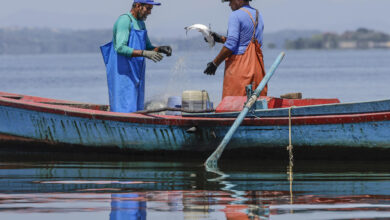Drones can help measure air pollution in Peru


In Peru drones can help measure air pollution. The Qaira project (Quality Air Automation) aims to use them as a more sustainable and cost effective way compared to the usual static monitoring stations.
Drones can be more precise, they are able to fly over any area, including those with difficult access, they analyze air pollution automatically and can operate in areas over 5,200 meters above sea level and do it in a shorter time. Also, pollution maps can be created with the received information and make predictions to take precautionary measures for health risks.
Between February and March, the Qaira team, lead by Monica Abarca, mechatronics engineer and co-founder, will start monitoring La Oroya, a city in the Peruvian Amazon region of Madre de Dios considered to be one of the world’s most polluted cities due to mining activities in the area.
This will be possible thanks to a robotics’ fund by The Institute of Electrical and Electronics Engineers, the largest technical professional organization dedicated to advancing technology for the benefit of humanity.
They’ll be using two drones and hope to collect data on the presence of substances like carbon dioxide, ozone, carbon monoxide, nitrogen dioxide among others. These substances are dangerous for both the respiratory and cardiac human systems.
After their trials in La Oroya the Qaira team hopes for the Peruvian government to implement this measuring method in the whole country and use it in other industries like the oil, farming and logging industries.
Also, Mariano Castro the former vice minister of the Peruvian Environment Ministry’s Environmental Management unit says this project is interesting and should collaborate with the government. Nonetheless he believes Qaira’s drones measurements should be used under already existing pollution measurements and limits.
He added, the government’s agencies like SERNANP already uses them to monitor protected areas and archeological sites.
Qaira began as Abarca’s graduating thesis in the Pontificia Universidad Católica de Perú (PUCP). In an interview for Mongabay Latam, she said drones had a larger potential. “They are cheaper than installing a static monitoring station. This costs up to 300,0000 dollars, plus the annual maintenance. Instead with drones you only invest between 20-30% of this cost.”
The team is searching for financing to keep the project going. “We’re looking for investors because our mission is to create a pollution map for the entire Peruvian territory. We must act now instead of waiting for Lima or another city in the country to have alarming pollution levels,” added Abarca.
LatinAmerican Post | Maria Andrea Marquez





